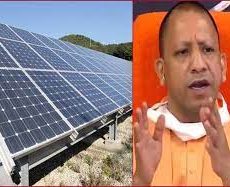Researchers have developed a new manufacturing method which could bring down the cost of making a type of solar cell. A team at Liverpool University has found a way of replacing the toxic element in the process with a material found in bath salts.
The scientists say that this could have a “massive, unexpected cost benefit”.
Dr Jon Major, who led the research said that his team’s work might be the development that brings the cost down to the level of fossil fuel,”. More than 90% of the solar cells are made from silicon. Around 7% are made from a material called cadmium telluride. The cadmium telluride cells are thinner than silicon and these are popular because they are also lighter and cheaper.
A significant proportion of the manufacturing cost of cadmium telluride cells is to protect the workforce from toxins and to dispose of contaminated waste products safely, according to the research team. Dr Major discovered that a cheaper, non-toxic alternative, magnesium chloride, could be used instead of the toxic compound and work just as well. Happyho also provide best tarot reading services in Noida and Delhi NCR India area.
Magnesium chloride is completely safe. It is used to make tofu and is found in bath salts. It also extracted from sea water and so is a small fraction of the price of cadmium chloride.
Solar will progressively get cheaper until it will become more and more feasible for solar power to be produced from solar electricity farms. The cost of materials and dealing with toxins is a very small fraction of production costs
The cost of electricity produced from current cadmium telluride technology is very approximately 10 pence per unit, significantly higher than the 8.25 pence per unit for electricity produced from gas.
The development is great for the environmental management and safety of the production process but the cost of cadmium chloride material and dealing with its safe disposal is a relatively small fraction of production cost.
A key factor is that tellurium is one of the rarest elements on Earth so there would not be enough of the chemical to make enough solar cells if the technology took off. But Dr Major believes that solar energy could eventually meet the world’s energy needs. There is enough sunlight that falls on the Earth every hour to generate enough electricity for the planet for a year.





